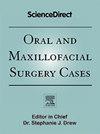Large intraosseous xanthoma of the mandible – A case report
Q3 Dentistry
引用次数: 0
Abstract
Xanthoma is derived from the Greek word xanthos, meaning yellow, and is related to the altered metabolism of lipids resulting in their accumulation in skin, tendon sheaths, and internal organs. Xanthomas manifest as yellowish papules, plaques, or nodules and are characterized by lipid-laden macrophages (foam cells). Xanthoma of bone is extremely rare and, when present, is often secondary to dyslipidemias or endocrine disorders. The former would be considered a secondary intraosseous xanthoma of bone. A xanthoma that is identified within bone in the absence of dyslipidemia or endocrine disease is considered a primary intraosseous xanthoma. When a xanthoma presents in the maxilla or mandible, it is considered an intraosseous xanthoma of the jaw. The first intraosseous xanthoma of the jaw was reported in 1964 and was referred to as a xanthogranuloma of the mandible. Since that initial report, less than 60 total cases have been reported in the English literature. The cases reported are typically small in size and amenable to enucleation and curettage. Our report contributes to the existing literature by providing a unique case example, highlighting the potential for these lesions to progress to a considerable size, impact adjacent anatomical structures, and necessitate more aggressive treatment.
下颌骨骨内大黄瘤1例
黄瘤源于希腊语xanthos,意思是黄色,它与脂质代谢的改变有关,导致脂质在皮肤、肌腱鞘和内脏中积聚。黄斑瘤表现为淡黄色丘疹、斑块或结节,以脂质巨噬细胞(泡沫细胞)为特征。骨黄色瘤极为罕见,当出现时,通常继发于血脂异常或内分泌紊乱。前者被认为是继发性骨内黄斑瘤。在没有血脂异常或内分泌疾病的情况下,在骨内发现的黄瘤被认为是原发性骨内黄瘤。当黄色瘤出现在上颌骨或下颌骨时,它被认为是颌骨骨内黄色瘤。第一例颌骨骨内黄色瘤于1964年报道,当时被称为下颌骨黄色肉芽肿。自那份初步报告以来,英国文献中报告的病例总数不到60例。报告的病例通常体积小,适合去核和刮除。我们的报告通过提供一个独特的案例,对现有文献做出了贡献,强调了这些病变发展到相当大的可能性,影响邻近的解剖结构,需要更积极的治疗。
本文章由计算机程序翻译,如有差异,请以英文原文为准。
求助全文
约1分钟内获得全文
求助全文
来源期刊

Oral and Maxillofacial Surgery Cases
Medicine-Otorhinolaryngology
CiteScore
0.60
自引率
0.00%
发文量
43
审稿时长
69 days
期刊介绍:
Oral and Maxillofacial Surgery Cases is a surgical journal dedicated to publishing case reports and case series only which must be original, educational, rare conditions or findings, or clinically interesting to an international audience of surgeons and clinicians. Case series can be prospective or retrospective and examine the outcomes of management or mechanisms in more than one patient. Case reports may include new or modified methodology and treatment, uncommon findings, and mechanisms. All case reports and case series will be peer reviewed for acceptance for publication in the Journal.
 求助内容:
求助内容: 应助结果提醒方式:
应助结果提醒方式:


